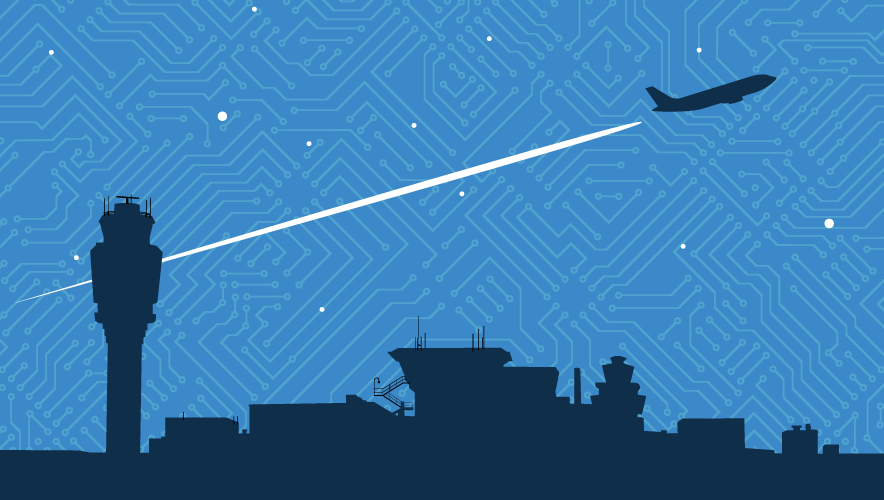A Force Multiplier: Why Physical Security Teams Should Leverage AI
Artificial intelligence (AI) has emerged as a transformative force that is reshaping industries, revolutionizing operations, and enhancing efficiencies across diverse domains.
While AI adoption has surged in various sectors, the physical security realm remains restrained in its incorporation of this technology. Presently, the predominant utilization of AI in physical security is confined to video management systems (VMS), showcasing a lag in leveraging AI's full potential, according to analysis from IFSEC Insider.
The lack of adoption of AI in physical security signifies a substantial gap in embracing this transformative technology. This limitation prevents the sector from reaping the broader spectrum of AI's capabilities, particularly in unifying and analyzing comprehensive security data.
The time is ripe for the security industry to bridge the gap and fully harness AI's capabilities, moving from sporadic use in VMS to a comprehensive embrace of AI's potential for unified security data analysis, risk mitigation, and operational efficiency enhancements.
The State of AI in Physical Security
The primary challenge faced by physical security lies in the fragmented utilization of AI. Analyzing VMS camera feeds, although valuable, offers very limited scope when compared to other sectors harnessing AI for comprehensive data analysis and predictive modeling.
In meetings with tens of enterprise clients during the past few years, physical security leaders repeatedly inform me that they continue to rely on legacy systems and manual processes, resulting in disparate silos of data related to guards, incidents, maintenance logs, compliance records, alarm systems, and asset tracking. These disparate sources of information often remain segregated, hindering holistic insights and situational awareness necessary for effective decision-making.
The primary challenge faced by physical security lies in the fragmented utilization of AI.
Furthermore, the failure to fully leverage AI's potential in unifying and analyzing these diverse data sets presents missed opportunities for predictive analytics, anomaly detection, and proactive risk mitigation. The sector's dependence on conventional security measures leads to a reactive approach, leaving enterprises vulnerable to evolving threats and compromising overall security efficacy.
Despite these limitations, I have witnessed notable strides in sectors willing to embrace AI for holistic security data analysis. The rapid ROI and enhanced operational efficiencies realized by logistics, healthcare, data centers, financial services, and several Fortune 1000 enterprises underscore the urgency for the security industry to expand its AI adoption beyond traditional surveillance systems.
Leveraging AI for Holistic Security Data Analysis
The broader application of AI involves amalgamating data from various sources such as guard patrols, incident reports, maintenance logs, compliance documentation, alarm systems, architectural layouts, and asset databases into a unified platform. By harnessing AI algorithms, this aggregated data can be standardized, analyzed, and transformed into actionable insights.
The crux of AI's power in physical security resides in its ability to ingest and synthesize large volumes of disparate data. Leveraging advanced analytics, AI models can detect patterns, correlations, and anomalies across multiple data sources that human analysts might overlook or struggle to identify efficiently. This comprehensive approach allows for predictive and prescriptive analytics, enabling security teams to proactively identify potential risks, anticipate security threats, and deploy cost efficient preemptive measures.
The AI-driven convergence of security data serves as a catalyst for developing proactive security strategies. By employing machine learning algorithms, AI systems can learn from historical data to anticipate potential security breaches, optimize guard deployments, predict maintenance requirements, and recommend compliance measures. To analyze the amount of data to draw such conclusions using traditional methods would be both time and cost prohibitive.
Moreover, the application of AI in security data analysis transcends mere anomaly detection. It extends to the realm of predictive modeling, enabling enterprises to forecast security trends, identify vulnerabilities, and simulate potential scenarios. This empowers security leaders to make informed decisions and design robust security frameworks aligned with evolving threat landscapes.
The successful deployment of AI for holistic security data analysis in sectors such as logistics, healthcare, and financial services underscores its transformative potential. The swift ROI realized through enhanced operational efficiency, reduced response times, and minimized security risks accentuates the urgency for the security industry to expand its AI integration across all facets of security operations.
The AI-driven convergence of security data serves as a catalyst for developing proactive security strategies.
Industries Embracing AI for Security
Various industries have recognized the transformative potential of AI in bolstering security measures, yielding substantial returns on investment. Several sectors stand out for their swift integration of AI technologies to enhance security protocols.
Logistics. Leading companies in the logistics industry are leveraging AI-powered predictive analytics to revolutionize warehouse security and operations. For instance, one of the largest global e-commerce platforms known for its extensive distribution network and high-volume operations is using AI algorithms to analyze data from instances of theft, shrinkage, digitized floor plans, access control systems, and camera footage. By detecting patterns of behavior and anomalies, AI empowers the company to proactively mitigate risks of theft and shrinkage—potentially resulting in significant cost savings and improved operational efficiency.
Looking ahead, logistics companies are expanding their AI initiatives beyond North America to Europe and the Asia Pacific Region. This will allow them to access more data and enhance their analysis capabilities, increasing their return on investment.
Healthcare. Top-tier hospital networks renowned for their expansive operations and dedication to patient care, including one of the largest healthcare providers in North America, are harnessing AI technologies to bolster security measures.
For example, leading hospital networks utilize AI to unify theft, incident, guarding, and alarm data to mitigate risks associated with theft and security incidents. They are also optimizing their guard patrol paths, based on incident and theft heatmaps. These institutions are focused on expanding AI adoption to optimize security protocols and enhance operational efficiency.
Data centers. Major players in the data center industry are embracing AI-driven analysis to enhance security measures and operational efficiency. Operators can use AI to identify tailgating, detect trends in access denial attempts during specific hours, and flag anomalous behavior in access control transaction data.
This proactive approach enables data centers to strengthen their security protocols, guarding resource allocation, and security camera coverage, while minimizing the risk of unauthorized access, security incidents, and breaches.
Looking ahead, data centers are poised to explore new use cases such as optimizing energy consumption to drive continuous improvement in security and operational effectiveness.
Financial services. The financial services sector, including leading investment banks and insurance firms, is at the forefront of AI adoption for security enhancement. AI algorithms play a role in detecting anomalies between physical and logical access, helping identify compliance breaches and ensuring strict adherence to security protocols.
For example, these algorithms can flag instances where members of different departments should not be close to each other—reducing the risk of security incidents. Another use case is financial services leveraging AI analysis to monitor alarm trends and mitigate cyber risks from untracked security asset life cycles.
In the future, financial institutions will explore new use cases for AI, including monitoring office occupancy levels and improvement in security practices.
These sector use cases showcase tangible outcomes after integrating AI into security systems, including enhanced efficiency through reduced incident response times and automated threat detection, lower operational costs due to streamlined processes, and increased risk mitigation because of proactive threat identification.
Future Trends and Predictions
Looking ahead, AI-driven security will likely focus on customization and personalization, employing AI algorithms to tailor security solutions to specific environments and evolving threat landscapes.
Additionally, AI will not be seen as a replacement but as a force multiplier for human capabilities, augmenting the effectiveness of security personnel. I anticipate that AI will also be used to emphasize robust cyber-physical security approaches that merge cyber and physical security realms to comprehensively address hybrid threats.
AI will play a pivotal role in shaping the future of security technology by revolutionizing threat detection, response mechanisms, and the overall proactive nature of security measures.
AI will not be seen as a replacement but as a force multiplier for human capabilities.
The current landscape of AI in physical security reflects its transformative impact across industries while recognizing the existing gap in AI adoption within the security domain compared to other sectors.
Considering the evolving threat landscape and the unparalleled potential of AI-driven solutions in effectively mitigating risks, the security sector needs to swiftly bridge this gap.
David Harris has more than 30 years of leadership and management experience in security. His corporate experience focused on the financial sector where he has overseen regional security operations in Asia, Africa, and Europe. His last role was as the managing director of physical security at Barclays Bank where he had global responsibility for all physical security operations, technology, and governance. Harris is currently vice president customer delivery at BeamUP, the world’s first AI-powered facility intelligence platform.
© David L. Harris












